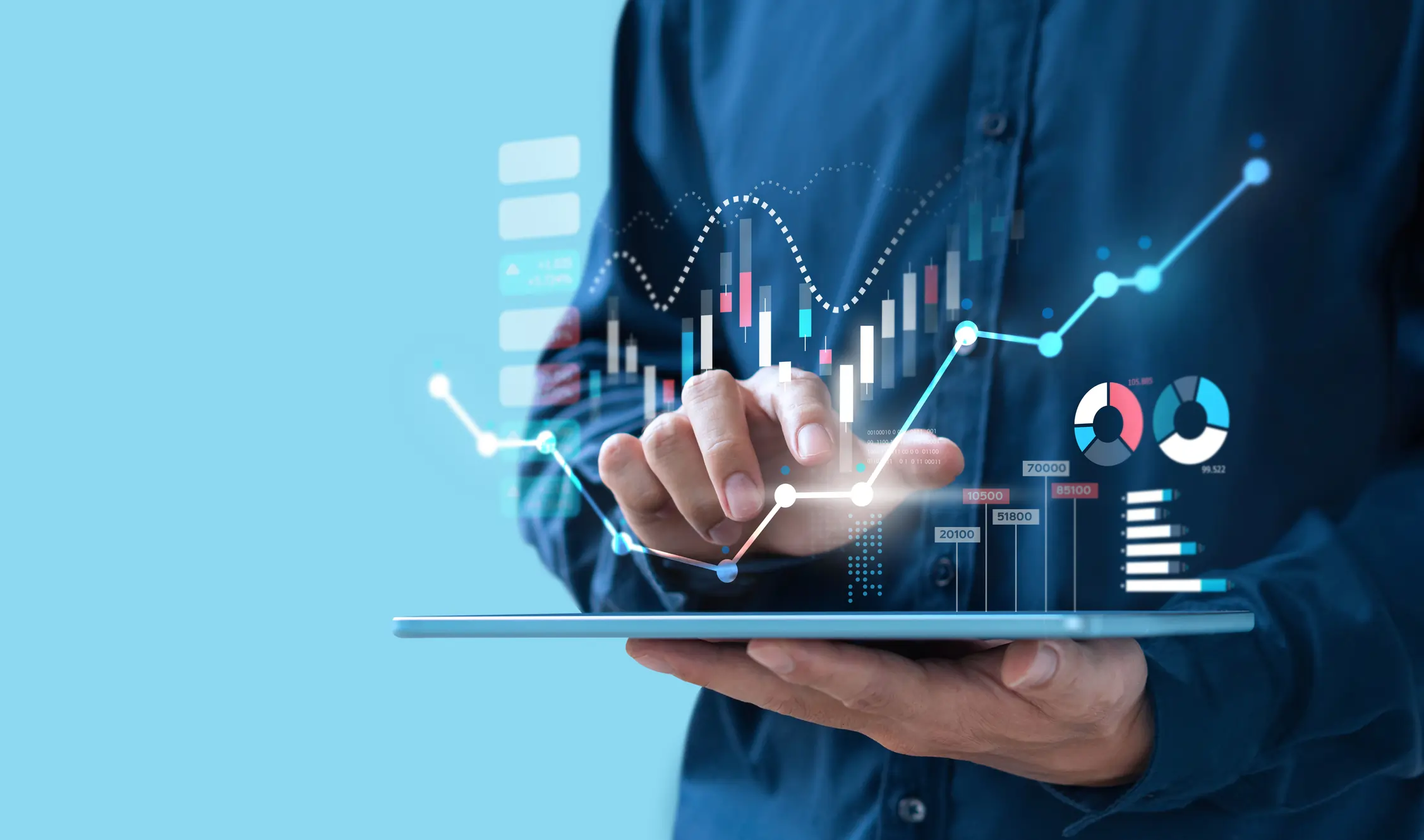
The impact of digital innovations on traditional stock trading
In the evolving landscape of finance, digital innovations have dramatically transformed traditional stock trading. From algorithms to apps, these technologies offer unprecedented access to market data and analytics, reshaping strategies for investors across the globe.
The shift to digital platforms
Trading before and after the internet:
The stock market once hinged on the bustling floors of stock exchanges with traders shouting orders—a stark contrast to today’s quiet, computer-driven trades. Before the digital era, access to market data was limited, with investors relying on brokers for insights and transactions. Now, digital platforms enable instant access to global markets, complete with tools that allow individual investors to trade directly and autonomously.
Enhanced access and democratization:
Digital innovations have democratized stock trading, allowing wider public participation. Online brokerages and trading platforms have reduced barriers to entry, such as high fees and minimum balances, which once restricted stock trading to the affluent or institutional investors.
The role of mobile trading apps:
Mobile trading apps are a standout innovation, providing the convenience to trade and manage portfolios from anywhere. Apps like Robinhood, E*TRADE, and others not only offer trading access but also educational resources to help users understand investment basics.
Automation and algorithmic trading
The rise of automated trading systems:
Automated trading systems use algorithms to buy and sell stocks based on predefined criteria. These systems can process vast amounts of data to make trading decisions at speeds and volumes unmatchable by human traders.
Impact on market efficiency:
While automated trading boosts market efficiency by increasing the liquidity and reducing the spread between buy and sell prices, it also raises concerns about market fairness and stability. However, these systems are designed to operate within regulatory frameworks that help prevent potential abuses or disruptions.
Benefits to individual investors:
For individual investors, automation can level the playing field against institutional investors. Automated tools can help manage and mitigate risk by executing trades at optimal prices, potentially enhancing returns.
Data analytics and its influence
Real-time data analysis:
The ability to analyze market data in real time is one of the most significant advantages brought by digital innovations. Investors can now receive updates on global market trends, economic news, and stock-specific information almost instantaneously.
Predictive analytics in stock trading:
Predictive analytics uses statistical algorithms and machine learning techniques to identify likely future events based on historical data. This can include predicting stock price movements, thereby informing investors’ strategies.
Customization and personalization of investment strategies:
With advanced analytics, investors can now personalize their investment strategies more effectively. Platforms can analyze individual risk tolerance, investment goals, and personal preferences to suggest tailored investment opportunities.
Challenges and considerations
Security concerns:
As stock trading platforms become more digitized, the risk of cyber threats increases. It’s crucial for investors to choose platforms with robust security measures and for traders to adopt strong cybersecurity practices.
Regulatory compliance:
Digital trading platforms must comply with financial regulations which are designed to protect investors and maintain market integrity. Compliance is complex but necessary to prevent fraud and misuse of technology.
Impact on traditional brokers:
While digital platforms offer many benefits, they also pose challenges for traditional brokers who must adapt to remain competitive. Many brokers have embraced these changes by integrating digital tools into their services.
The evolution of investor behavior and expectations
Shifting investor demands: Digital technology has not only changed the tools with which we trade but also the very behavior and expectations of investors themselves. Today’s traders demand greater control over their investments, more transparent market activity, faster execution times, and lower costs—all of which are facilitated by digital platforms. This shift is reflected in the rising popularity of DIY investing platforms where investors can actively manage their portfolios without traditional brokerage intermediaries.
The need for instant gratification: The modern investor’s need for instant gratification is well-served by real-time trading and updates, features that were unimaginable a few decades ago. This need extends beyond just trading; it includes real-time notifications about market movements, news, and even automated insights about one’s investment health.
Enhanced risk management tools
Sophisticated risk analysis: Digital innovations have also introduced more sophisticated risk management tools, allowing traders to better understand potential risks and rewards. Platforms now offer various analytical tools that can simulate different investment scenarios, predict market volatility, and calculate potential losses, helping traders to make more informed decisions.
Automated risk controls: Additionally, many digital platforms incorporate features like stop-loss orders and alerts that help investors minimize losses without needing to constantly monitor the markets. These automated safeguards are crucial, especially in volatile markets, ensuring that investments are somewhat protected against sudden market downturns.
The integration of artificial intelligence and machine learning
AI in market predictions: Artificial intelligence (AI) and machine learning (ML) are at the forefront of predicting market trends and consumer behavior. These technologies can analyze vast datasets to identify patterns that would be impossible for human analysts to find, providing a competitive edge to those who leverage them.
Machine learning for personalized investing: ML algorithms are also increasingly used to tailor investment strategies to individual preferences and risk profiles. By learning from a user’s past decisions and market outcomes, these systems can offer personalized investment recommendations, potentially boosting returns.
Regulatory and ethical considerations
Ensuring fairness in digital trading: As digital trading platforms grow, regulatory bodies face the challenge of ensuring these innovations do not disrupt market fairness or transparency. This involves creating and enforcing rules that prevent market manipulation and protect investor interests, particularly for less experienced traders.
Ethical use of technology: Furthermore, the ethical use of AI and data in trading is a significant concern. There is a continuous debate on how much market influence these technologies should have, especially concerning automated trading that can lead to significant market movements based on algorithmic decisions alone.
FAQs
What are digital innovations in stock trading? Digital innovations in stock trading refer to advancements like automated trading systems, mobile apps, and real-time data analytics that enhance trading efficiency and accessibility.
How do automated trading systems work? Automated trading systems use algorithms based on predefined criteria to execute trades automatically, aiming to increase speed and reduce errors in trading operations.
What is the impact of mobile trading apps on investors? Mobile trading apps provide greater access to the stock market, allowing users to trade, monitor investments, and learn about finances directly from their smartphones.
Can predictive analytics improve investment decisions? Yes, predictive analytics helps forecast market trends and stock movements by analyzing past and current data, which can inform better investment decisions.
How do investors protect themselves against cybersecurity risks? Investors can protect themselves by using trading platforms with strong security measures, employing robust passwords, and staying informed about the latest cybersecurity practices.
Conclusion
Digital innovations have significantly altered the landscape of traditional stock trading. They have made the market more accessible and efficient but also come with challenges like cybersecurity risks and regulatory hurdles. As technology continues to evolve, so too will the strategies of investors who must stay informed and adaptable to navigate this new digital frontier effectively.


